

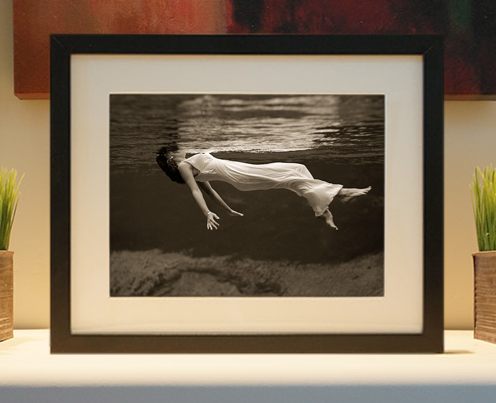
Framed or unframed, desk size to sofa size, printed by us in Arizona and Alabama since 2007. Explore now.
Shorpy is funded by you. Patreon contributors get an ad-free experience.
Learn more.

- Uncle SAAM
- Obfuscation
- One Chocolate Soldier rode away
- Victor Marquis de la Roche
- The Little House Across Way ...
- Vanderbilt Gates
- Vanderbilt Mansion
- You can still see that gate
- Withering heights for me
- So Jim,
- Top Heavy
- Re: Can't Place It.
- Bus ID
- Since you mention it
- The White Pages ?
- Moonlight Tower
- 1907?
- Fire(men) and Water
- Can't Place It
- Can anyone
- Wings
- Where's Claudette and Clark?
- Overbuilt Rolodex
- One song
- Give Me Wings Please!
- PRR
- Pinball Wizards
- Possible anti-dancing rationale
- Life imitates art
- Don't dance to the Packard!
Printporium
Cracker Barrel: 1939
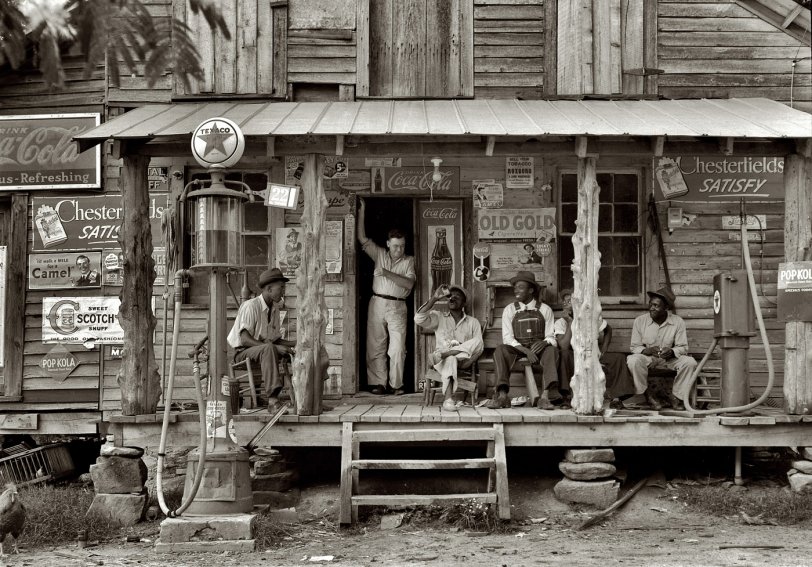
July 1939. Gordonton, N.C. "Country store on dirt road. Sunday afternoon. Note kerosene pump on the right and the gasoline pump on the left. Rough, unfinished timber posts have been used as supports for porch roof. Negro men sitting on the porch. Brother of store owner stands in doorway." 4x5 nitrate negative by Dorothea Lange for the Farm Security Admin. View full size.
Coveralls and Tie Guy
Life has blessed me with a lot of luck: I'm a white American male in the 21st century.
But, just one day in my life, I surely would like to look that cool!
Not a lost art
I disagree with Sewickley. Club I belong to does not have a working TV. Everyone I know there are chatting and joking. No working TVs, only a broken one. Yes, there are times technology (computer or cell phone) comes into play, but it does not dominate. Conversation and good cheer dominate.
Kolorized
Lest we forget, this was colorized by a fellow Shorpy-ite.
Well worn
The front step reminds me of the steps going to the basement in an old hardware store I worked at in high school. The steps were so worn in the middle they were at least half an inch thinner in the middle than at the ends.
Watching the store
Here is the Google Street View. The store is in Gordonton, NC. Spin around to the other side of Wheelers Church Road and you'll see a house maybe as old as the store. I'm going to believe this is where the brother-owner lived and from which veranda he kept an eye on his store.
The Lost Art
What's the lost art? Just sitting and talking with your neighbors. Look at their faces, and it's clear that they're fully present, living in the moment.
Today, you're unlikely to find six men gathered together. If you did find them, they'd be staring blankly at a television.
More on the building
The building is still standing and I photographed it. And I met the great-nephew of the man standing in the doorway. In addition, this almost exact setting is used in the American Adventure at Epcot (see photo in link).
My story and photos are here.
Out of the Dark Ages
RE: Electrical box
The date of the photo and the apparent newness of the object are all consistent with what was going on in NC at the time. I did a little research and found out that in 1930, only 3% of NC farms had electricity. By 1935 it had grown to 11% and by 1961 93% of rural farms and residences had electricity. So, by 1939, it appears this store had their wiring installed sometime during the early period of electrification and that new box is a good example of one of the period. The men are smiling because that soft drink is ice cold!
Set a Spell
Was in Gordonton on May 11, 2011. The building is still there, talked to the owner, and he said they are trying to get the historical society to restore it. Wish them all the luck. Its a great old building. He took us inside to see everything there.
Only thing I don't recognize
The small gray box mounted on the right side of the window above the last man on the right (in blue shirt). Looks like an electric panel but a tad too modern for the period? It's gone in the recent pictures taken by Cole Image. Anyone have any idea of what that is?
[Cutler-Hammer junction box. - Dave]
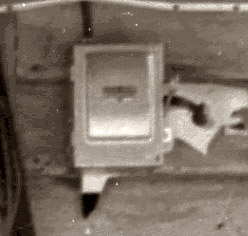
Country Store 2010
My wife and I found the building and took theses pics. http://www.panoramio.com/user/1811082/tags/Gordonton
Born the same year as the creation of this image, the current owner is the nephew of the man in the doorway. The store stopped operating in the mid forties whereupon it was used as a tobacco curing barn.
It would be terrific if this structure could be preserved.
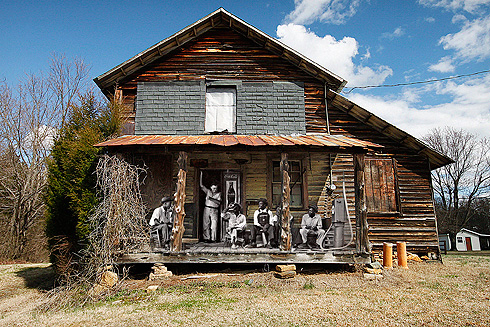
This picture was taken in Person County, NC
For those of you who have pondered the origins of this photo, it is indeed a photo taken at a country store in Roxboro, N.C. This was called Bayne's Store and we do get a lot of questions and email here at the museum pertaining to this picture. It is a wonderful snapshot of a period and location in history in which racism doesn't seem to be at the forefront of the community and there are still several community stores around here today where a picture similar to this one could still be captured.
Country store of all country stores
I am only on page 434, so it is hoped that I am not too premature, but this has to be the best of the lot. It depicts the rural South minus the hard times between people. It is one of the greatest shots I have ever seen in print.
Georgia, 1950s?
I'd be willing to bet that this is 1954 or 1955, in southern Georgia.The fourth guy from the left has a new pair of bib overalls,but with a wide top. The top of these got narrower in the early sixties. Some of the tin signs on the wall date to the early'30s, and I would expect that the building dates to the late 1890s, with some updates in the late teens or early twenties. All guesses, but I've been dealing with old photos for a long time as a museum dude, and have spent a lot of time in the south. Again--Just guessing.
[The caption is correct as is. Note the sign "Sell your tobacco in Roxboro." - Dave]
All those signs...
It looks like the inside of a Crackerbarrel restaurant.
Extraordinary texture
The image is beautifully composed, and (I think) truthfully depicts a country store in the rural south of the 1900s to the 1950s. While it is not entirely clear if this is a "plantation" store, the evidence appears to be that it is independent. Note the sign that says "sell your tobacco". The distinction is important. Independent rural stores sold on a cash basis (though there was also credit). Plantation stores existed largely an extension of the sharecropping economy and "furnished" their hands with credited food and household items until the crops were brought in. There were widespread abuses as plantation owners cooked the books.
The cedar posts on the porch were selected to withstand rot and insects, and the stone pillars under the joists that support the floor also were selected to withstand moisture and insects.
And the store was open on a Sunday. No blue laws in the countryside, I suppose.
Chickens
The casual nature of the chicken-keeping situation . . . is awesome!
Country Store
I love the props under the porch, stacks of stones with bits of timber at the top! The accumulation of Stuff has taken off, the ads, the little Pepsi-Cola off to the side, the BIG Coca-Cola! Great shot.
22 cents
That 22 can't be correct for gas a gallon--unless it didn't change for 35 years or so!
[22 cents per gallon is correct. Click here for a chart showing historical gasoline prices in the United States. From the 1920s to 1970s the pump price of a gallon of gas changed very little. And adjusted for inflation, it's about the same now as it was in 1920. - Dave]
22 cents in 1939
According to this inflation calculator, 22 cents in 1939 was the equivalent of $3.04 in 2006. Gas wasn't really so cheap back then.
What, No WiFi?
A wonderful composition. Hollywood set designers would poor [?] of this type of picture to recreate rural America in the 1930s. Life before the Internet sure looks simple.
Lotus07@gmail.com
Homepage: http://www.bruceandsueinencanto.com
Go Dave
I don't know how to describe humor but I know it when I see it . . . ROTFL
Dave as in David Hall, I presume - this blog is awesome.
[Yes, that's me. Hi, Tom! - Dave]
BOOM!
Anybody else notice that the gentleman on the far left is sitting right next to the gas pump AND smoking a cigarette?!
[At least he's not holding a baby! - Dave]
'nother one
what a great picture! untold histories laid right out there.
Set a Spell
The only thing lacking here is an old hound dog lying around somewhere ... under the porch or in the yard. Is that 22 cents on the gas pump?? Wow! Great picture.
Gasoline Pump
I remember old stores like this growing up in Dyer County Tennessee. Those old gas pumps were all mechanical with no electrical power, notice the hand crank, you pushed the crank back and forth to pump the gasoline up into the glass container at the top which had gallon markings, then you put the hose nozzle into your tank and it was gravity fed until the container was empty.
Overalls and a tie
I love it. The second guy from the right might be living in tough times, but he's still cool enough to make that look good.
Country Store
Look how the threshold is worn down. A lot of repeat customers have passed through that door.





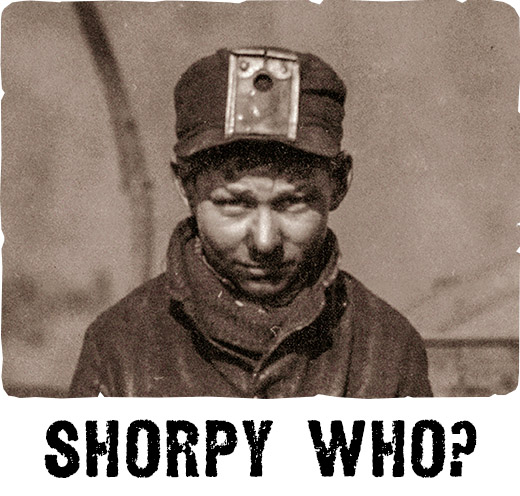
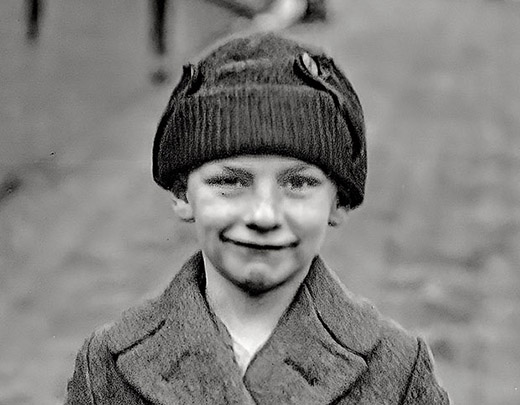
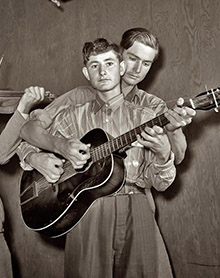
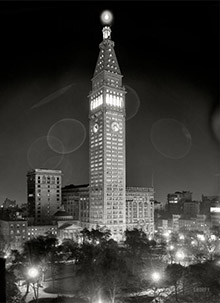
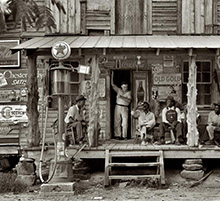
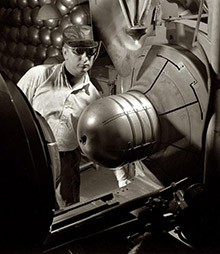
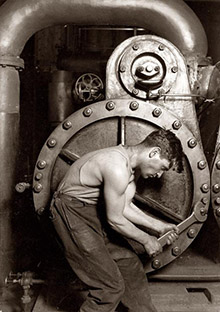
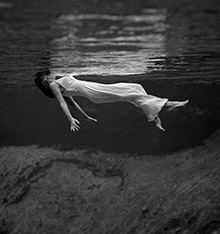
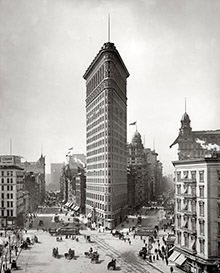
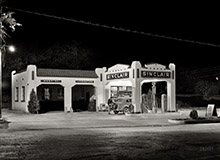
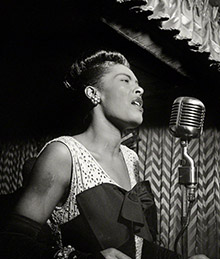
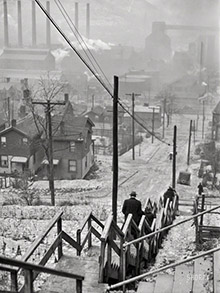
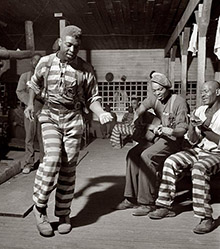
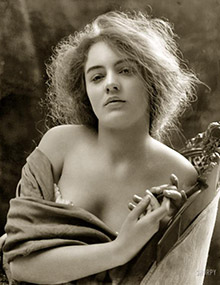
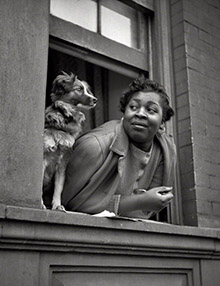
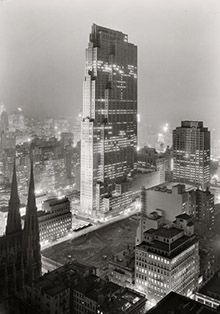
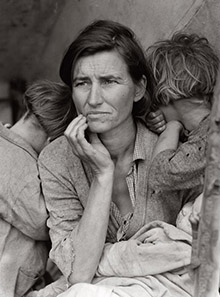
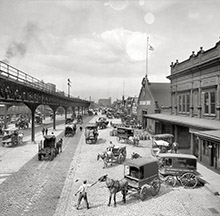
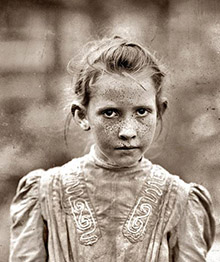
On Shorpy:
Today’s Top 5